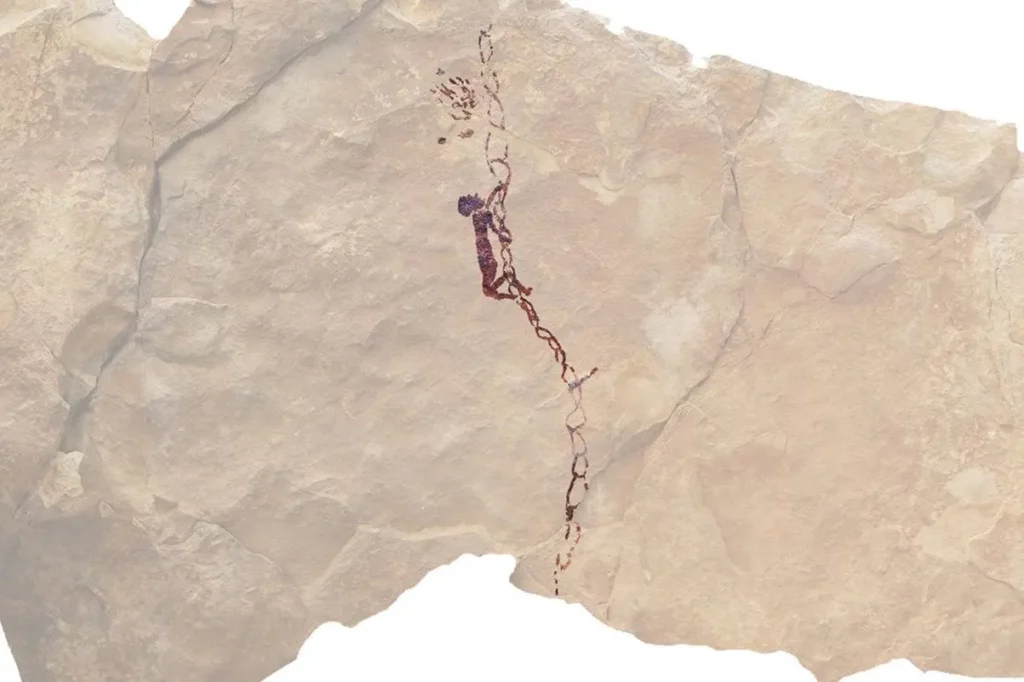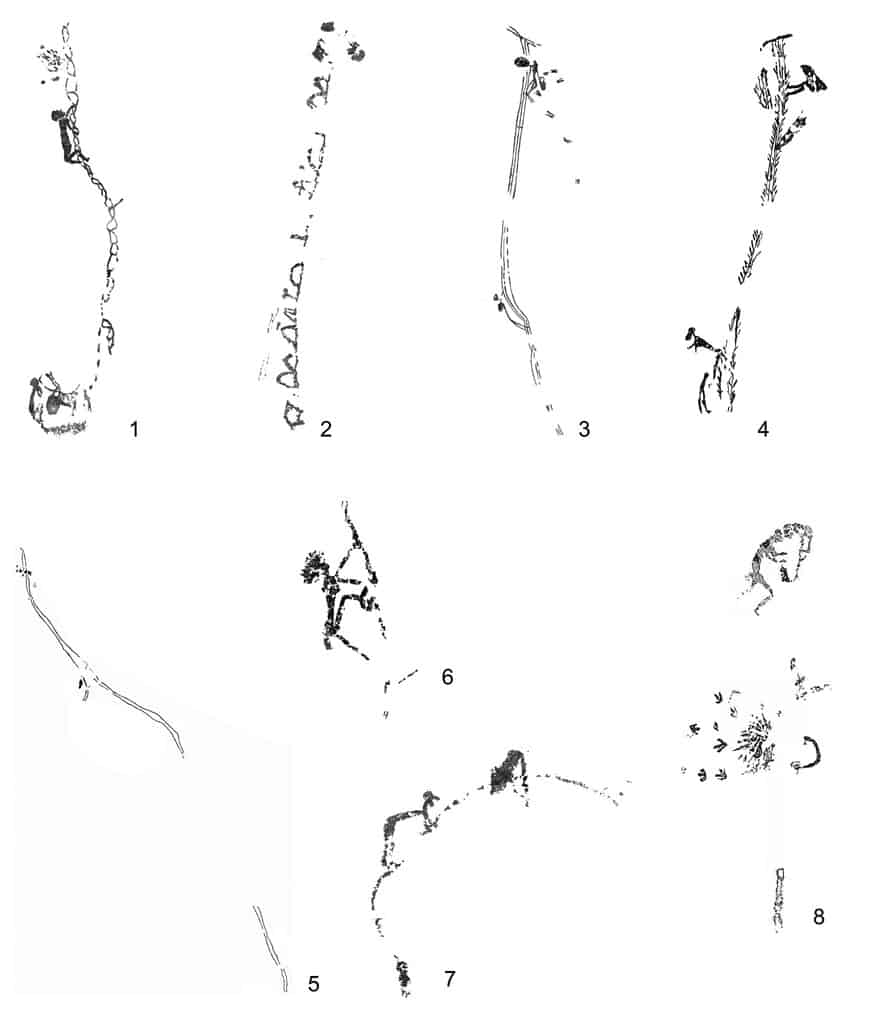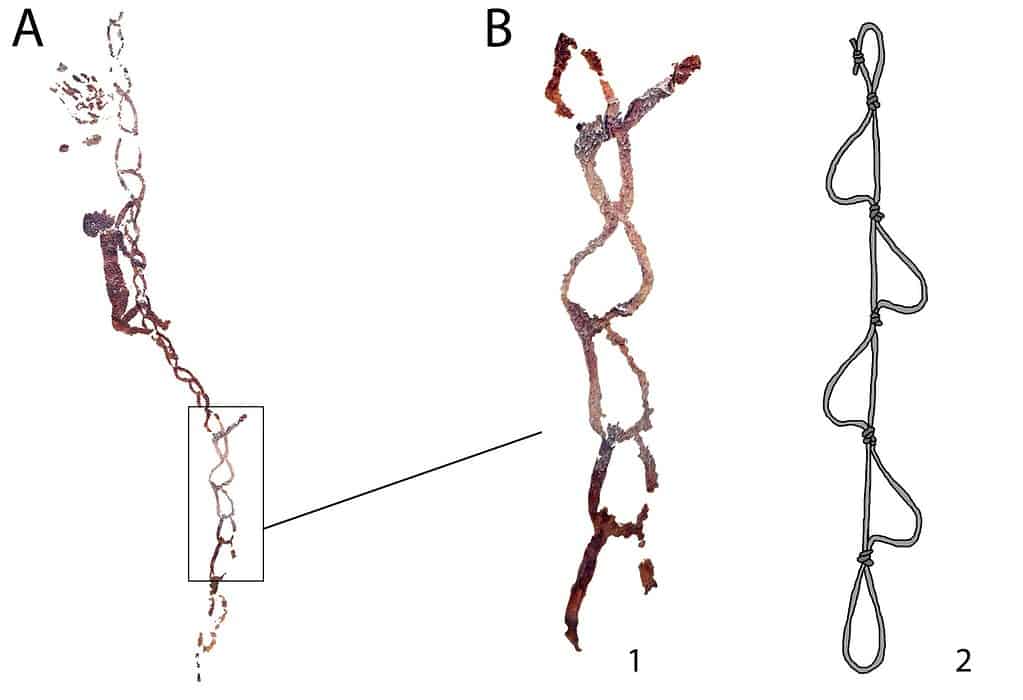
Since the dawn of humanity, our ancestors have roamed the Earth, adapting to diverse environments and crafting tools and shelters to ensure their survival. During this journey, our ancestors often had to get creative when faced with a seemingly insurmountable obstacle, such as a steep rock face or mountain.
In a new study, researchers claim they have identified the earliest evidence of people using rope ladders to reach unconventional places. This intriguing claim is based on cave paintings in eastern Spain, which depict people using makeshift rope ladders to reach a beehive.
The paintings are dated to around 7,500 years ago, showing that prehistoric people may have been even more resourceful than previously thought.
But while the cave art offers valuable insight, it does not reveal the specific techniques employed for rope production, leaving questions about whether twisted or braided fibers were used. At the same time, the length of the depicted ropes implies proficiency in creating durable, long ropes, hinting at their specialized usage for climbing.
The Honey Hunt

The artwork suggests that ancient Spanish Levantine societies must have heavily relied on honey collection, the only activity clearly discernible from the depictions (besides climbing of course).
If the artist drew the painting to scale, the rope would measure approximately 25 meters. This indicates a great willingness to invest significant time and effort, underlining the critical importance of honey and wax for these people.
Prehistoric societies valued bee-related products for various economic, technological, and cultural purposes, from providing high-calorie sustenance to facilitating tool production. The art showcases various climbing systems, categorized into rigid ladders or masts, and flexible systems, possibly reflecting different types of materials. For instance, some of the climbing structures look like tree trunks while others look clearly like ropes.
Interestingly, while Spanish Levantine rock art is geographically widespread in over 1,000 sites in the region, depictions of climbing systems are concentrated in only two places: the Maestrazgo in the northern regions of Castelló and Teruel, and the Caroig Massif in the southern region of Alicante. Researchers suggest that these may reflect specific behaviors, territorial codes, or symbolic significance.
The ephemeral nature of the materials used for rope production makes it challenging to trace their origins over time. But luckily, these cave paintings have survived the test of time and are now providing invaluable new information.

The art of constructing and successfully ascending rope ladders was no small feat in ancient times, as evidenced by the painstakingly intricate designs and precision required. What stands out even more is that these ladders were anchored and suspended from above. Hunting for honey must have been quite dangerous.
One particular scene first discovered in 2021 showcases a complex ladder design known as a stirrup ladder. Remarkably, this design is still used in the mountaineering practices of today.
The art itself is also quite good. For instance, the artist meticulously captured the way the closest stirrups shrink due to the climber’s weight and the tension on the rope.
What prompted our ancestors to invest such significant time and effort into this perilous pursuit remains uncertain. But it appears that the allure of honey and the valuable beeswax were compelling enough.
Designated as a World Heritage Site since 1998, the Spanish Levantine rock art, a unique artistic phenomenon of the eastern region of the Iberian Peninsula, provides a vivid portrayal of human life during a pivotal stage of development.
The depictions of hunting, warfare, social activities, and gatherings offer a valuable window into the past. The latest research extends this understanding, illustrating how these societies navigated the daunting challenges of their environment with their craft and courage.
The findings appeared in the Cambridge Archaeological Journal.









